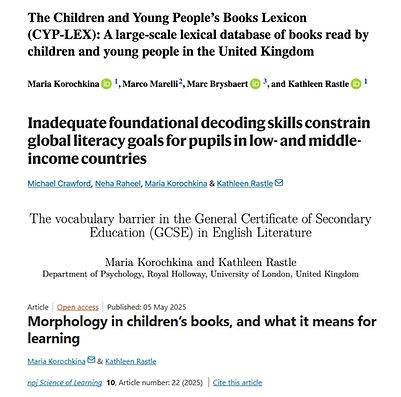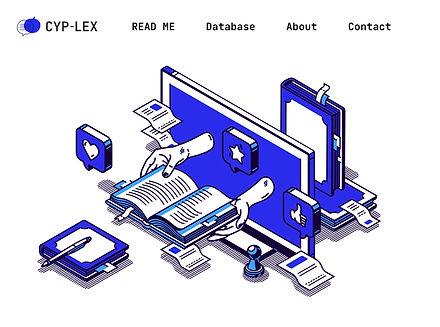
RASTLE LAB

What do children learn about
morphology through reading?
Most words in English (and in other languages) are built from smaller units of meaning called morphemes (e.g., cleanly = clean + -ly, unclean = un- + clean). Understanding how a language's morphology works is vital because it allows us to generalise. For example, we can understand misclean even if we have never seen it before, because we recognise mis- and clean as meaningful elements and have internalised their meanings. In this way, morpheme knowledge serves as a powerful tool for expanding vocabulary and supports rapid and efficient reading comprehension in adults.
This project aims to uncover how we acquire abstract knowledge of affix morphemes (e.g., -ify, -ly). These units typically do not occur on their own, so their functions must be inferred through experience with whole words (e.g., purify, falsify, simplify). Recent theories suggest that we learn these units because they carry valuable cues about word meaning (e.g. -ify means 'to make [stem]') and that reading experience plays a key role in developing this knowledge. However, these theories are based on controlled laboratory experiments using simplified miniature languages. Real language is much messier, so we still don’t know what drives learning “in the wild” or exactly what children are taking in.
Our research offers the first large-scale attempt to quantify the nature of affix information in children’s literature. We build a corpus of 1,200 books popular among readers aged 7–16 and develop a theoretical account of how children learn affix meanings through reading. We implement this account computationally, create metrics that capture the consistency with which individual affixes convey meaning, and show that these metrics account for variation in readers’ word recognition performance. This work delivers impact across both research and real-world practice: it transforms our understanding of how children learn about morphology through reading, pioneers the integration of corpus analysis, behavioural experimentation, and computational modelling to build psychologically valid theories of language, and offers guidance for designing effective morphology instruction in schools.
This page offers an overview of the project’s outputs (academic articles, resources), our public engagement activities (general-audience articles, public talks, podcasts), and how our work has been discussed within the education community.

We've shared our findings in a series of peer-reviewed articles exploring the vocabulary in popular children's books and its implications for learning words and morphemes.
We've put together a suite of data and tools — freely accessible for you to explore, use, and expand!


We love bringing research to a wider audience. In this section, you'll find clear and accessible summaries of what our research has uncovered about reading, vocabulary, and literacy.
From conference sessions to keynote talks, we've presented our work to colleagues across the world.


We've also shared our findings with educators, parents, and policymakers — click here to browse slides and watch recordings!
Our team has appeared on a variety of education and literacy podcasts, connecting with listeners in classrooms and homes across the globe.


Our work has sparked conversations well beyond academia, with educators and media outlets sharing and discussing our findings.